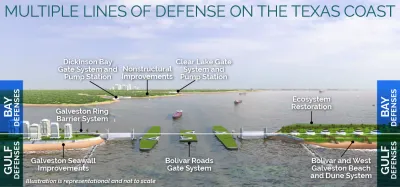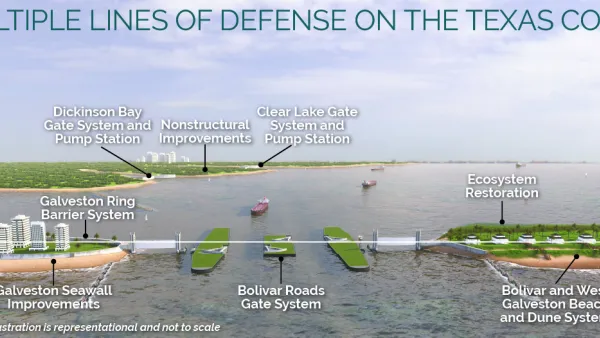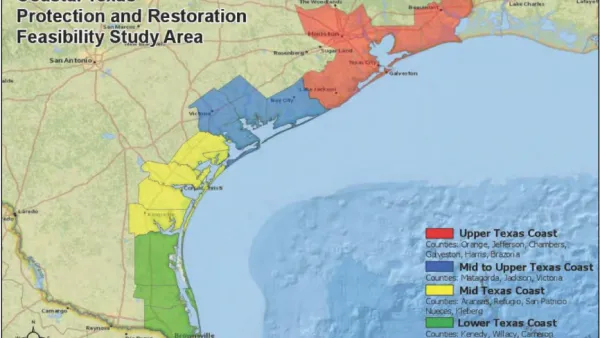Congress authorized the $31 billion ‘Ike Dike’ sea-level rise adaptation project, along with a laundry list of other water infrastructure projects.

Committees in the U.S. House of Representatives and the U.S. Senate have approved the biennial Water Resources Development Act (WRDA), which would authorize a long list of water infrastructure projects, including the $31 billon Ike Dike megaproject to protect the Texas coast around Galveston from rising waters.
According to an article by Jeff Davis for the Eno Center for Transportation, the WRDA authorizes projects for development by the U.S. Army Corps of Engineers. The projects still need to be funded by the Appropriations Committees. The list of projects to be authorized by the WRDA include navigation, flood risk management, hurricane and storm damage risk reduction, ecosystem restoration, and other projects, according to the article.
“That $31 billion Texas project – $19.2 billion federal share, and $11.7 billion non-federal share – is, by far, the largest project authorization anyone can remember seeing in a WRDA bill, ever, by a long shot. If the bill is enacted, that project would, single-handedly, erase the $17 billion of progress made by the [Infrastructure Investment and Jobs Act] towards paying down the old Corps unfunded backlog and push that backlog to new heights,” according to Davis.
The project—previously called the Coastal Texas Protection and Restoration Feasibility Study but referred to locally as the “Ike Dike”—is by far the biggest ticket on the list. “The name of the project as presented in the bill does not give a precise location, but the Chief of Engineers’ report on the Corps website makes it clear that the project is centered around a massive floodwall protecting Galveston Bay (and thus Houston) from storm surges coming in from the Gulf of Mexico,” according to Davis.
Additional coverage of the Ike Dike is available from an article by Francis Wilkinson for Bloomberg published on May 1.
Planetizen shared news of the Ike Dike when the project was made public in 2018 and again when revised plans were released in 2020.
FULL STORY: House, Senate Advance WRDA Bills Authorizing $31B Texas Megaproject

Analysis: Cybertruck Fatality Rate Far Exceeds That of Ford Pinto
The Tesla Cybertruck was recalled seven times last year.

National Parks Layoffs Will Cause Communities to Lose Billions
Thousands of essential park workers were laid off this week, just before the busy spring break season.

Retro-silient?: America’s First “Eco-burb,” The Woodlands Turns 50
A master-planned community north of Houston offers lessons on green infrastructure and resilient design, but falls short of its founder’s lofty affordability and walkability goals.

Test News Post 1
This is a summary

Analysis: Cybertruck Fatality Rate Far Exceeds That of Ford Pinto
The Tesla Cybertruck was recalled seven times last year.

Test News Headline 46
Test for the image on the front page.
Urban Design for Planners 1: Software Tools
This six-course series explores essential urban design concepts using open source software and equips planners with the tools they need to participate fully in the urban design process.
Planning for Universal Design
Learn the tools for implementing Universal Design in planning regulations.
EMC Planning Group, Inc.
Planetizen
Planetizen
Mpact (formerly Rail~Volution)
Great Falls Development Authority, Inc.
HUDs Office of Policy Development and Research
NYU Wagner Graduate School of Public Service




























